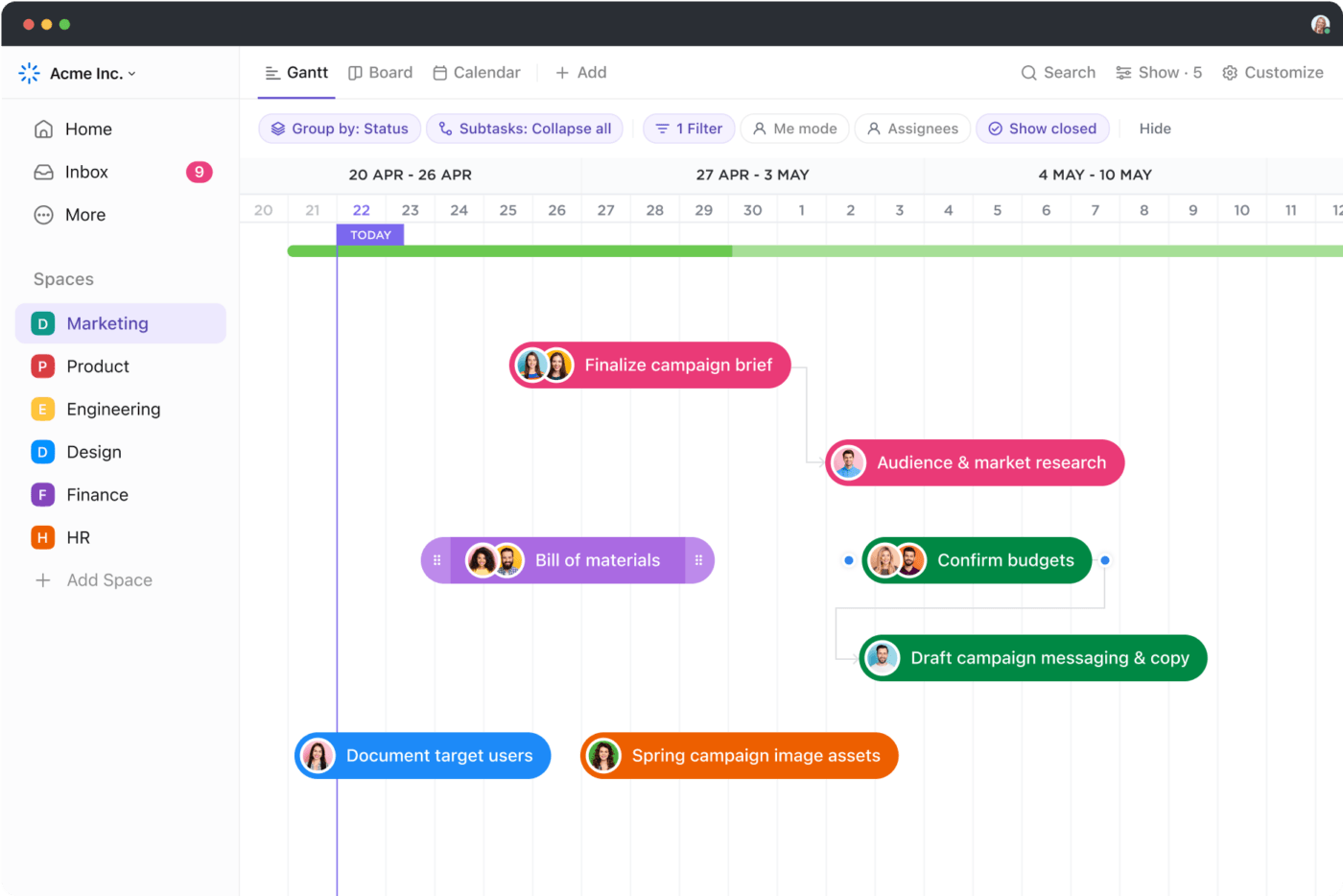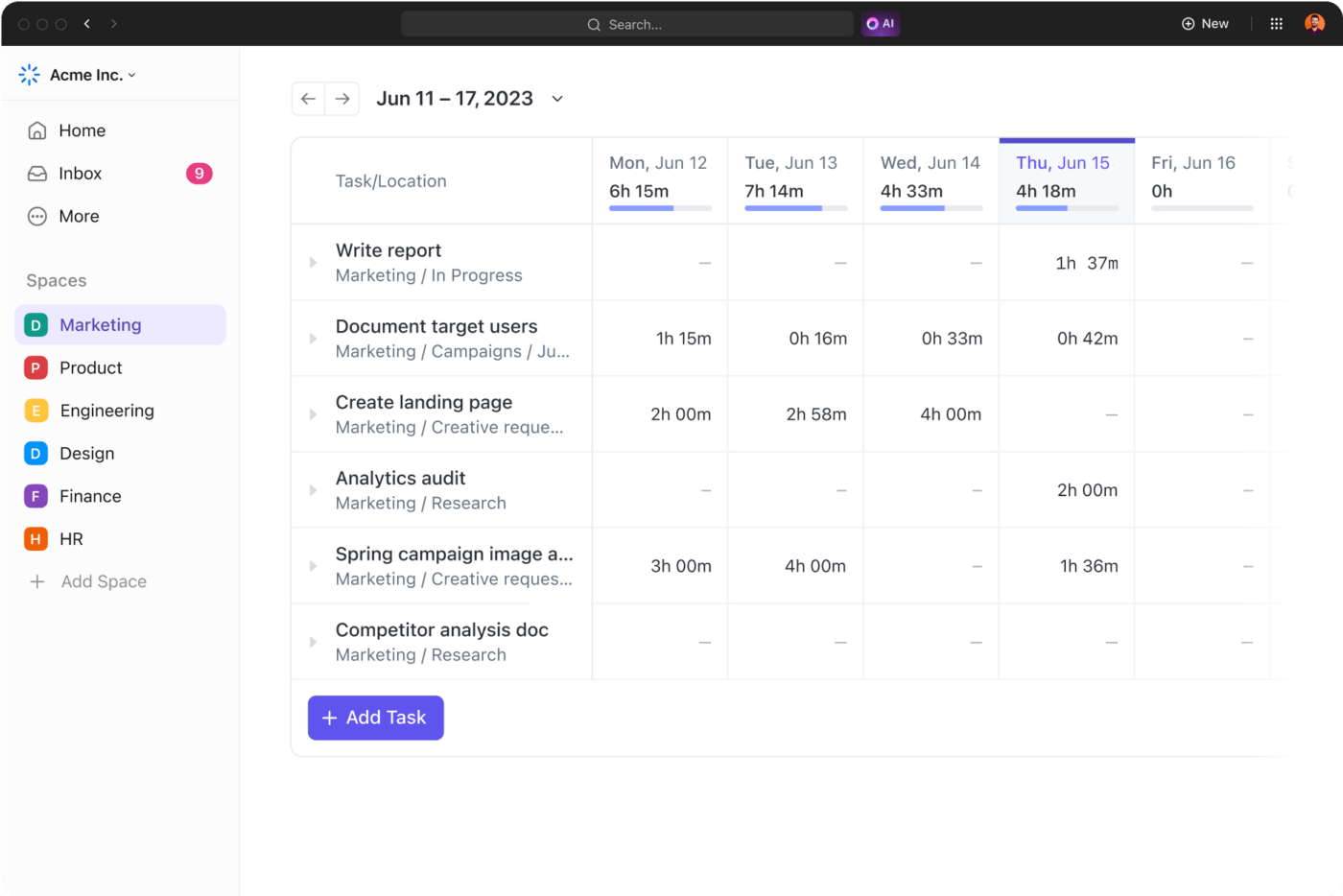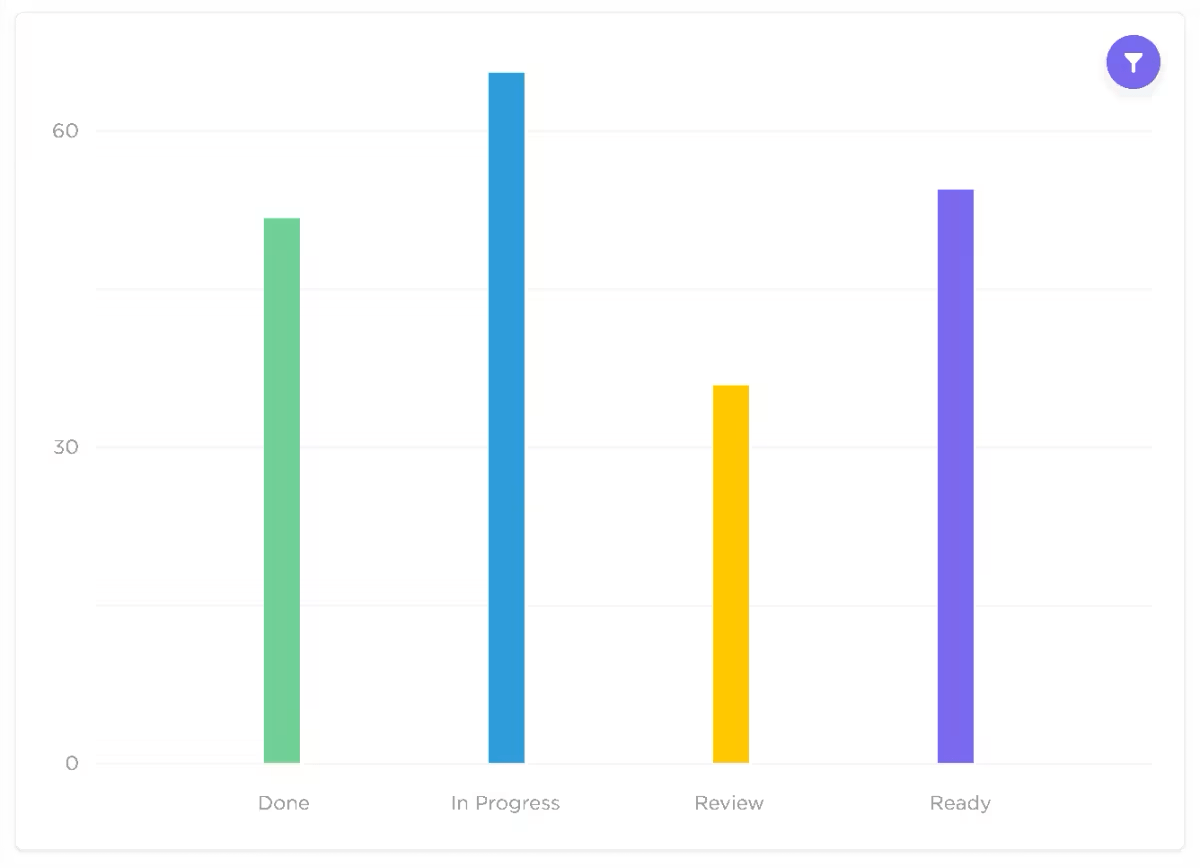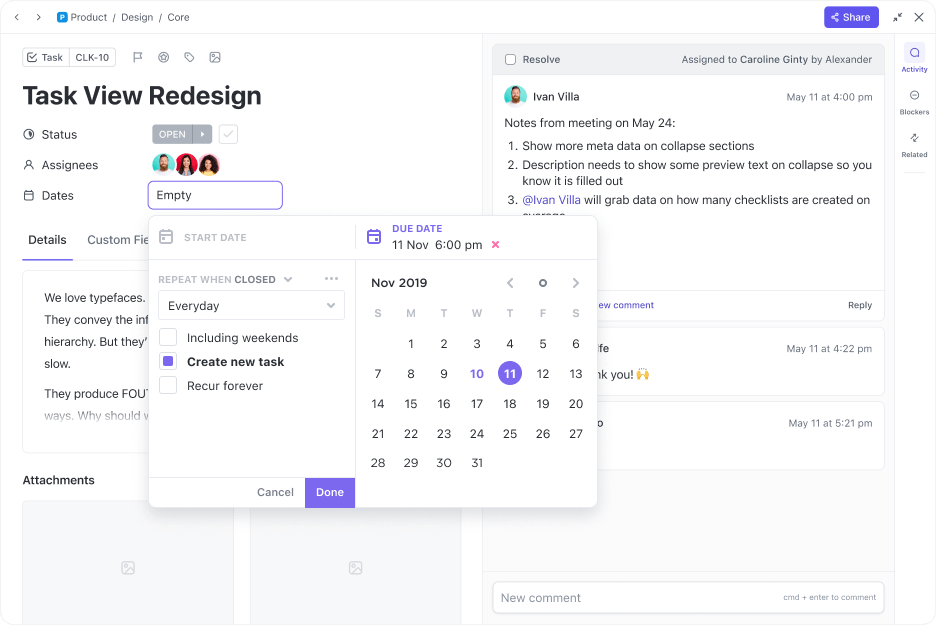Measure Estimated Time of Completion in Project Management

Sorry, there were no results found for “”
Sorry, there were no results found for “”
Sorry, there were no results found for “”
Did you know that, on average, projects exceed their estimated timelines by about 27%?
This is a stark reality that project managers and team leaders are all too familiar with.
Accurately forecasting the estimated time of completion (ETC) is both a science and an art, essential for optimizing planning and execution.
Misjudging ETC can lead to spiraling costs, missed deadlines, and a domino effect on other tasks.
In this blog, we will talk about the importance of ETC in enterprise project management and how mastering it can be the secret ingredient to seamless project execution, helping your team deliver on time every time.
In project management, the estimated time of completion (ETC) is the calculated prediction of how long it will take to finish an ongoing project. By analyzing the time required for individual tasks and reviewing historical data from past projects, project managers can estimate the lead time required for project completion with a more realistic estimate.
This practice considers the project’s entire work breakdown structure, critical path, and detailed tasks. Project managers often use various techniques, such as bottom-up estimating, parametric estimating, and three-point estimating, to better understand time estimates.
They also rely on project schedules, PERT charts, and past experience with similar projects. Accurately tracking time and refining time estimation methods improve planning, budgeting, and resource allocation. They also reduce the risks of failed projects and poor time estimation.
Estimated Time of Completion (ETC) is crucial at every stage of the project management lifecycle.
During the planning phase, it helps project managers establish a realistic timeline and allocate resources appropriately. By understanding the project’s estimated time to completion, you can prioritize tasks and assign team members efficiently.
Throughout project execution, tracking ETC against actual progress allows managers to spot delays early and adjust the project schedule and resources if necessary.
During project closing, comparing ETC with actual time helps refine future estimates, providing valuable data for similar projects. Overall, accurate ETC plays a significant role in delivering projects on time, within budget, and with optimal resource utilization.
Estimated Time of Completion (ETC) and Estimated Time of Arrival (ETA) are both important for project tracking and planning. Here’s a side-by-side comparison to clarify their differences:
| Aspect | Estimated Time of Completion (ETC) | Estimated Time of Arrival (ETA) |
| Definition | The time required to complete the remaining work | The specific date and time of project delivery |
| Focus | How much time is needed from the current point | When the project or task will be completed |
| Use in planning | Helps adjust resource allocation and scheduling | Informs key stakeholders of expected completion |
| Metric type | Time interval (e.g., days/hours to complete tasks) | Specific point in time (e.g., expected due date) |
| Scope | Applicable to individual tasks or entire projects | Usually, for the entire project or key milestones |
| Tracking adjustments | Changes as progress is made or obstacles are met | Updates reflect changes in the overall project plan |
Various methodologies are used to determine the Estimated Time of Completion (ETC). These include:
The critical path method (CPM) identifies the longest path of tasks in a project, often called the ‘critical path.’ These tasks directly impact the project timeline because delays will push back the entire project’s completion date.
For example, imagine a software development project that involves planning, coding, testing, and deploying an application. The critical path would be determined by identifying tasks that must occur in sequence and have no slack time.
If the coding task in a particular module takes ten days and directly leads to testing, which takes another 5 days, then the combined duration of 15 days becomes the critical path. If coding takes longer than ten days, the overall project timeline will be delayed, as testing can’t begin until coding is completed.
The program evaluation and review technique (PERT) involves creating a network diagram representing project tasks and their dependencies. PERT uses three estimates (optimistic, pessimistic, and most likely) to calculate the expected time required to complete each task.
Imagine planning a product launch event. You identify key tasks such as securing a venue, arranging marketing materials, and finalizing the guest list. For securing a venue, PERT estimates might look like this:
The PERT estimate is calculated using the following formula: (O + 4M +P) / 6
Using the PERT formula, the expected time to secure the venue is:
This average estimate is then applied to calculate the project’s overall timeline, considering other tasks and dependencies. This approach allows you, as a project manager, to account for uncertainties and provide a more accurate project completion estimate.
A work breakdown structure (WBS) divides a project into smaller, manageable tasks, organizing the entire project’s workload into clear deliverables.
The ClickUp Work Breakdown Template is designed to streamline this process, enabling project managers to visualize and track project progress. Some of its key features include:
The template allows you to create a detailed plan, set important deadlines, and deliver a project’s estimated time of completion accurately.
Estimated Time of Completion (ETC) factors into each phase of the project management lifecycle, providing experienced project managers like you with crucial data to align project timelines, optimize resources, and mitigate risks. Here’s how ETC impacts each stage:
In the initiation phase, ETC helps you determine project feasibility. By analyzing historical data from similar projects, you can assess whether your projected timeline aligns with strategic goals and available resources. This sets you up for project success before the project even begins.
During the planning stage, ETC is invaluable for refining project schedules and creating more accurate milestones. As you break down tasks and dependencies, ETC informs the work breakdown structure, critical path analysis, and resource allocation. You can set achievable deadlines that keep your team on track and stakeholders satisfied.
While executing the project plan, comparing actual progress with the expected ETC reveals early warning signs of potential delays. You can swiftly adjust resource allocation or tweak processes, ensuring individual tasks don’t derail the entire project timeline.
Monitoring ETC against real-time progress lets you address deviations quickly. Whether it’s scope creep or unexpected technical issues, this stage requires vigilance to keep project completion dates in line. Adjust ETC estimates to ensure your corrective measures meet revised expectations.
At the project close, you compare the estimated time with the actual time taken to complete each task. This comparison offers valuable insights that can improve future ETC estimates and refine your project’s scheduling processes, benefiting both your team and organizational objectives.
Accurate ETC measurement requires the right project management software. A well-rounded project management tool is indispensable for accurate time estimation and effective scheduling. Look for these key features to ensure comprehensive project planning:









Project management tools enhance ETC calculations by providing advanced features that help track time, manage tasks, set clear expectations, and adjust schedules dynamically. Tools like ClickUp ensure that all aspects of a project are accounted for so that you can conduct a more precise and reliable ETC estimation.
ClickUp provides a comprehensive solution with advanced project time management features and intuitive tools to refine project timelines. It is an ideal tool for streamlining ETC calculations and keeping projects on track.
ClickUp is an all-in-one enterprise project management platform designed to streamline your workflows, simplify collaboration, and enhance time estimation.
With features like Gantt charts, time tracking, goals, and customizable project templates, ClickUp helps you accurately forecast the ETC. It also helps you visualize timelines, allocate resources, and refine schedules to deliver projects on time while effortlessly managing your team’s workload.
Let’s look at these features in detail:
Effective time management is crucial for accurate ETC (Estimated Time to Completion) calculations. Utilizing time tracking tools, setting clear expectations with time estimates, and adjusting schedules as needed can ensure that your team stays aligned, even when timelines change.
ClickUp’s Time-tracking features allow you to log time from any device. Set clear expectations for each task using time estimates. Additionally, remap due dates and drag-and-drop schedules to keep your team aligned, even when timelines change.

Project scope management involves defining and controlling what is included in the project. It helps set clear boundaries and expectations, which is crucial for accurately estimating the time to completion (ETC). It also helps ensure that all tasks, dependencies, and resources are accounted for.
ClickUp’s Project Scope template lets you organize tasks with custom statuses, fields, and views. This ensures effective prioritization of resources, timelines, and dependencies. With this template, you can easily communicate your project scope with your internal and external stakeholders and closely track your goals and objectives.
Goal tracking involves setting measurable objectives and monitoring progress toward achieving them. This process helps ensure that the team stays focused on key priorities, which is essential for accurate ETC calculations.
The ClickUp Goals feature allows you to link tasks directly to measurable goals and track your progress toward completion. Organize goals into folders and set milestones to keep your team focused on key objectives.

Dates and time management involve setting and prioritizing start and due dates for tasks and subtasks. This ensures that the team meets deadlines and maintains a consistent workflow, which is vital for precise ETC calculations.
ClickUp Dates and Times helps you prioritize daily tasks and subtasks with start and due dates, ensuring alignment with deadlines. It also provides notifications to help your team stay focused on their top priorities.

Earned value management (EVM) is a project management methodology integrating scope, schedule, and cost to assess project performance.
It provides critical insights into planned vs. actual progress by comparing the value of completed work to the planned value and incurred costs. Key project management KPIs like planned value (PV), earned value (EV), and actual cost (AC) are used to calculate variances and indicators that help project managers make data-driven decisions.
Imagine you’re managing a software development project with a total budget of $500,000. Your team has been working for several months, and you’ve spent $200,000 to develop the initial features, representing 40% of the project’s scope. Here’s how the ETC and EVM metrics play into the project’s valuation:
Understanding this gap early helps you re-evaluate resource allocation, adjust the project’s timeline, or refine the scope to bring the project back on track.
This proactive approach ensures final costs align more closely with expectations, improving project profitability.
An accurate estimated time of completion (ETC) is vital for determining reliable project valuations, as it:
Detailed time management or project estimating techniques are crucial for productivity and successful project delivery in real-world scenarios.
This involves using methodologies like Gantt charts, Kanban boards, and the critical path method (CPM) to understand task dependencies and allocate resources efficiently.
Incorporating ETC helps project managers prioritize tasks, identify bottlenecks, and adjust schedules proactively. Besides this, some other applications of ETC involve:
Accurate ETC measurements give project managers insight into resource allocation and timeline planning. By understanding exactly how much time remains for each task, teams can:
Ultimately, accurate ETC measurements streamline project time management, leading to improved productivity, greater stakeholder satisfaction, and successful project outcomes.
So, now that you understand the importance of estimated time of completion (ETC), the next step is to refine your project management processes. Start by applying advanced time management techniques like the critical path method (CPM) or program evaluation and review technique (PERT) to estimate time effectively.
Leverage tools that integrate ETC tracking with resource allocation and timeline management for better forecasting and risk mitigation.
Consider ClickUp’s comprehensive suite of features, like Gantt charts, time tracking, and customizable templates, to forecast timelines accurately and deliver projects on time.
ClickUp can help your team achieve seamless project execution. Try ClickUp for free today.
© 2026 ClickUp